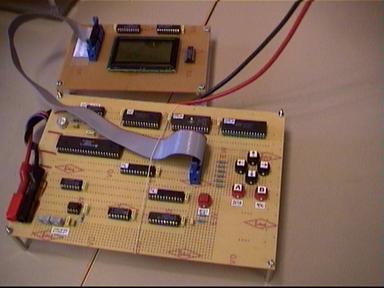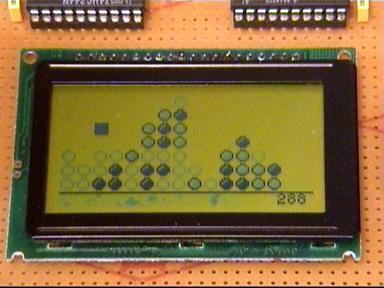

The game itself is not a new idea. It is a game known as both Same Game and Same Stone. In the beginning we were a bit uncertain about what game we would choose, so "Some Game" became the name of the project. If you want to know more about the game we strongly recommend the users manual (only availiable in Swedish). There you'll find screenshots and a good description of the game.
If you're interested in pictures you find them here:


On the next row we have the allmighty CPU (Motorola 68008) and the display cable that was always in the way. In the middle of the board you will find two identical chips placed diagonally from each other. Those chips asre our PALs. They're slaving away listening to the address and data buses and deciding what chips should be activated based on this. They're doing this very well, but, on the other side, that was also what they were programmed to do.
On the last rows we find some logic for the display, some interrupt stuff (the interrupt timer), fome flip-flops and some simple logic for the buttons. Yada yada.
Oh, the buttons!!! You see them on the far right on the board. They're really nice. They're so nice that you really want to press them, don't you? But you can't. Mail us on somegame@menthos.com and we'll press some of them for you.
There's also a reset button connected to two of the processor pins via a simple analogue low-pass filter. Do you wonder what happens when you press it? The game restarts. Exciting, eh? I think I'll press reset now.